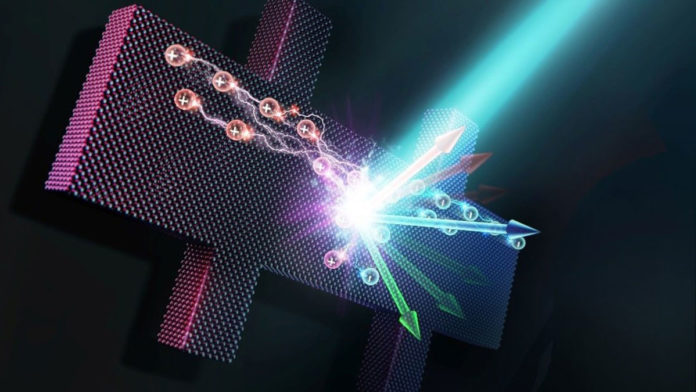Majority and minority carrier properties such as type, density, and mobility represent fundamental yet challenging to access parameters governing semiconductor device performance. Obtaining this information simultaneously under light illumination would unlock many critical parameters vital for optoelectronic devices and solar cells, but realizing this goal has remained elusive.
In a new study, an IBM Research-led collaboration portrays an exciting breakthrough in a 140-year-old mystery in physics. The discovery could empower us to open the physical characteristics of semiconductors in a lot more prominent detail. Moreover, it could also help in the advancement of better than ever semiconductor materials.
Understanding the physics of semiconductors requires an understanding of the fundamental properties of the charge carriers inside the materials. It includes a charge of the particles, their speed under an applied electric field, and how densely they are packed in the material.
In 1879, Physicist Edwin Hall had determined those properties. When he discovered that a magnetic field will deflect the movement of electronic charges inside a conductor and that the amount of deflection can be measured as a voltage perpendicular to the flow of charge, that voltage is also known as the Hall voltage that reveals the essential information about the charge carriers in a semiconductor, including whether they are negative electrons or positive quasi-particles, their speed in an electric field or their “mobility” (µ) and their density (n) inside the semiconductor.
After decades of Hall’s discovery, scientists recognized that it is possible to perform the Hall effect measurement with light. The experiment is called a photo-Hall experiment, where light illumination generates multiple carriers or electron–holes pairs in the semiconductors. However, scientists were unable to extract the properties of both carriers (the majority and minority carriers) simultaneously.
A new study unlocks one of the Hall effect’s long-held secrets. Scientists discovered a new formula and technique that enable us to simultaneously extract the majority and minority carrier information such as their density and mobility, as well as gain additional insights about carrier lifetimes, diffusion lengths, and the recombination process.
In the photo-Hall experiment, both carriers contribute to changes in conductivity (σ) and Hall coefficient. The key understanding originates from estimating the conductivity and Hall coefficient as a function of light intensity. Hidden in the trajectory of the conductivity-Hall coefficient (σ-H) curve, uncovers a significant new data: the difference in mobility of both bearers. As talked about in the paper, this relationship can be expressed as Δµ = d (σ²H)/dσ
Scientists noted, “Starting with a known majority carrier density from the traditional Hall measurement in the dark, we can solve for both majority and minority carrier mobility and density as a function of light intensity.”
Scientists dubbed their new technique as Carrier-Resolved Photo Hall (CRPH) measurement. With a known light illumination intensity, the carrier lifetime can similarly be established. This relationship and the related solutions have been hidden for nearly a century and a half, since the discovery of the Hall effect.
The technique requires a clean Hall signal measurement, which can be challenging for materials where the Hall signal is weak (e.g., due to low mobility) or when extra unwanted signals are present, such as under strong light illumination. For this purpose, one needs to perform the Hall measurement with an oscillating (ac) magnetic field. Like listening to the radio, one must select the desired station’s frequency while rejecting all other frequencies that act as noise.
The CRPH technique goes a step further and selects not only the desired frequency but also the phase of the oscillating magnetic field in a method called lock-in detection. This concept of ac Hall measurement has long been known, but the traditional technique using an electromagnetic coil system to generate the ac magnetic field was inefficient.
In science, advances in one area are triggered by discoveries in another. In 2015, IBM Research reported a previously unknown phenomenon in physics related to a new magnetic field confinement effect, nicknamed the “camelback” effect, which occurs between two lines of transverse dipoles when they exceed a critical length.
The effect is a key feature that enables a new type of natural magnetic trap, called a parallel dipole line (PDL) trap. The trap could serve as a novel platform for various sensor applications such as a tiltmeter and seismometer (earthquake sensor).
Surprisingly, the same PDL element has another unique application. When rotated, it serves as an ideal system for a photo-Hall experiment to obtain strong, unidirectional, and pure harmonic magnetic field oscillation. More importantly, the system provides ample space to allow large area illumination onto the sample, which is critical in the photo-Hall experiment.
Scientists said, “The newly developed photo-Hall technique allows us to extract an astonishing amount of information from semiconductors. In contrast to only three parameters obtained in the standard Hall measurement, this new technique yields up to seven parameters at every tested light intensity. These include the mobility for both electron and hole; their carrier density under light; recombination lifetime; and diffusion lengths for electron, holes, and ambipolar type. All of these can be repeated N times.”
“This discovery and technology will help push semiconductor advances in both existing and emerging technologies. We now have the knowledge and tools needed to extract the physical characteristics of semiconductor materials in great detail. For example, this will help accelerate the development of next-generation semiconductor technology such as better solar cells, better optoelectronics devices, and new materials and devices for artificial intelligence technology.”
The study is published in the journal Nature.
